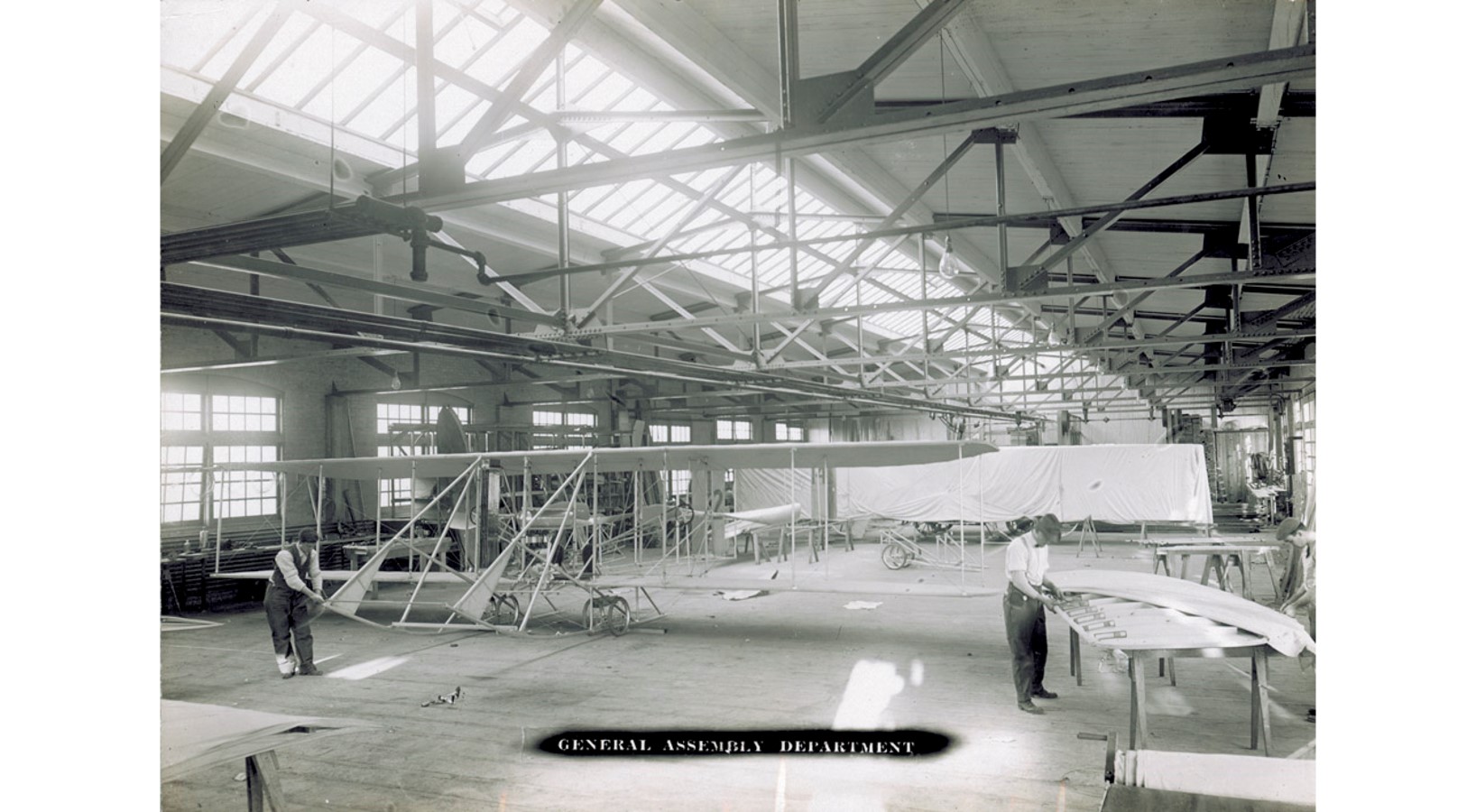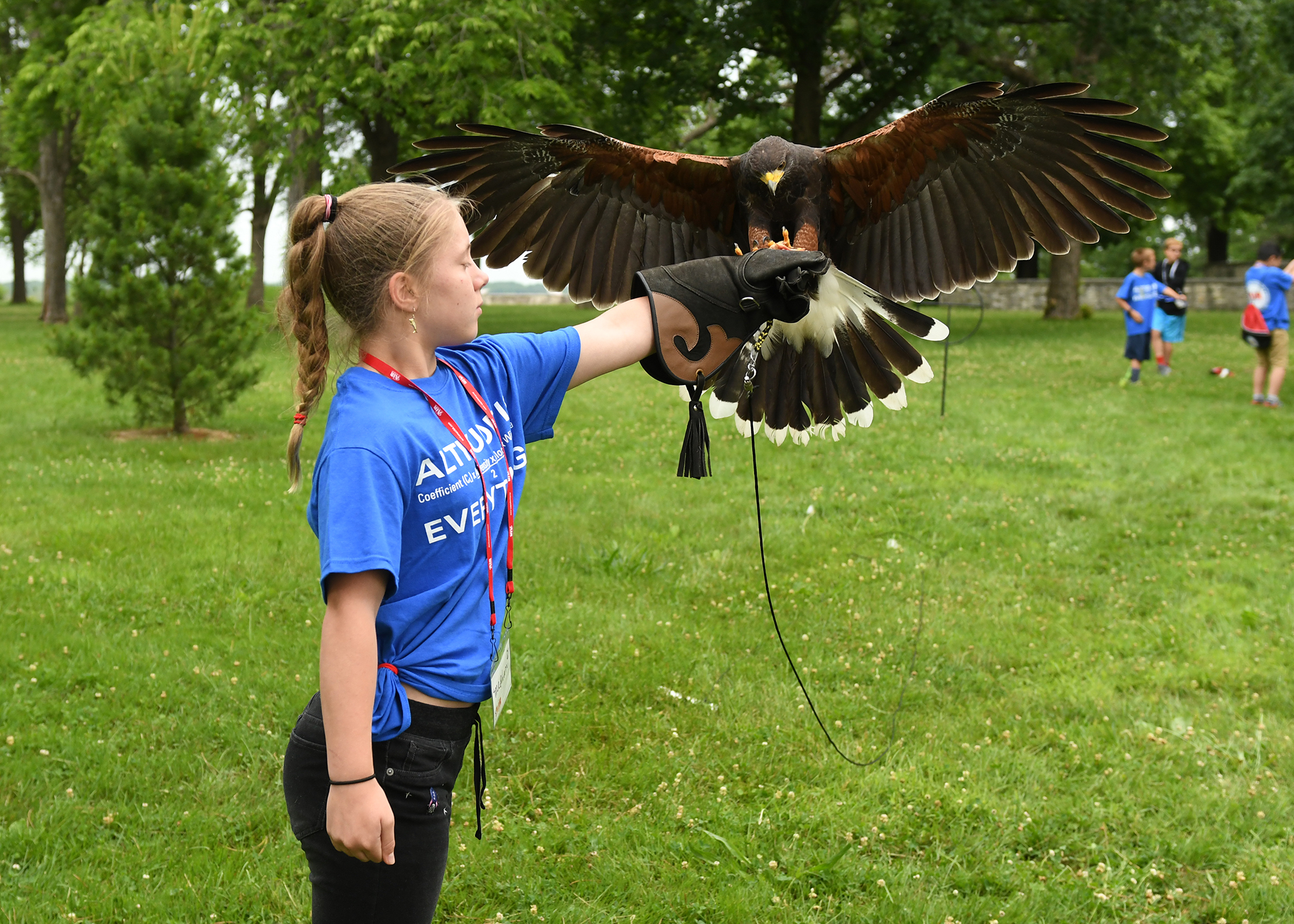Be a Nature Inventor on National Aviation Day
To celebrate National Aviation Day, we are turning our blog over to guest contributing author, Elizabeth Connor, the Director of Communications for the National Aviation Heritage Area, which includes many sites along the Great Miami Riverway.
August 19, 2020
“The Heart of a Vast Commercial Organism, that is what Dayton has become since she’s the greatest traction line center in the world.” (Dayton Daily News, 7 July 1900)
At the turn of the century, Dayton held more patents per capita than anywhere else in the United States. The thriving economy and population in the Miami Valley spawned one of the largest centers of interurban railways in the country and played a major role in the birth of aviation. Wilbur and Orville Wright took the Dayton, Springfield & Urbana daily from their west Dayton shop to the farm of Torrence Huffman about eight miles to the east, getting off at a small shelter called Simms Station. The 100-acre farm was perfect for an impromptu airfield, if you didn’t mind a few cows and horses grazing on the runway.
Through a series of unique experiments at Huffman Prairie in 1904  and 1905, the Wright brothers mastered the principles of controlled, powered flight, and developed the world's first practical airplane. On October 5, 1905 with the Wright Flyer III, Wilbur piloted the plane for a world record of over 24 miles in 39 minutes.
and 1905, the Wright brothers mastered the principles of controlled, powered flight, and developed the world's first practical airplane. On October 5, 1905 with the Wright Flyer III, Wilbur piloted the plane for a world record of over 24 miles in 39 minutes.
Today, National Aviation Day, celebrates the development of aviation. Started in
1939 by President Franklin Delano Roosevelt, Orville Wright’s birthday is now annually a time to honor connections, share resources, and discover new adventures. Aviation connected the world in real life, before the internet shifted our perception of time and space. In 2020, the online world is making life possible for so many of us, but it can’t replace everything.
This year is different, but we encourage you to channel your inner inventor by exploring the outdoors and seeing how nature inspires you. What do you see nature doing already that you could use in your life?
The Wright brothers researched birds in their quest to build the world’s first airplane. According to Wilbur, “My brother and I became seriously interested in the problem of human flight in 1899…Our own growing belief that man might [sic] learn to fly was based on the idea that while thousands of the most dissimilar body structures, such as insects, fish, reptiles, birds and mammals, were flying every day at pleasure, it was reasonable to suppose that man might also fly.” (The Bishop’s Boys, Tom Crouch, pg. 161)
Here are just a few other examples to get you started:
- Velcro — thanks to the burrs getting stuck on his pants from the burdock plant, George de Mestral experimented for 10 years before getting his hook-and-lock “zipperless zipper” perfected.
- Bullet trains – while they were originally invented to follow the form of bullets, the noise was unbearable when they exited tunnels. Engineer Eji Nakatsu, an avid birdwatcher, changed their design to match a kingfisher and the noise problem was eliminated.
- Sonar – now commonly found in submarines, animals like bats have been using sonar for millenia.
- Suction cups – the next time you mount your GoPro camera on your helmet, remember that octopi use this same function to grab prey and scale uneven underwater surfaces.
“If the bird’s wings would sustain it in the air without the use of any muscular effort, we did not see why man could not be sustained by the same means.” -Orville Wright
We can’t wait to see what you invent – share it with us by tagging #StayLocalGoFar and make sure to get outside and explore.
Elizabeth Connor, APR
Director of Communications
National Aviation Heritage Area
